
Blue Ceanothus: the most beautiful varieties
A selection of remarkable California lilacs
Contents
Mexico and the western United States have given us around fifty species of Ceanothus, commonly known as California Lilac. Deciduous or evergreen, most of these bushes thrive and flower abundantly only in the south of France, although some varieties can withstand temperatures as low as -15°C. By late spring, the profusion of flowers almost completely covers the plant and offers masses of blue colour, highly sought after by gardeners. Some rarer varieties display white or pink blooms.
Among the many species of California Lilac, we have selected 7 Ceanothus with blue flowers, each more remarkable than the last, to bring an intense blue vibrancy to your garden!
→ Interested in planting a Ceanothus? For further reading on your selection, check our guide “Ceanothus: how to choose your California lilac – FIND THE IDEAL VARIETY FOR YOUR GARDEN!
Ceanothus impressus 'Dark Star': an intense flowering
Let’s kick off with what is probably one of the most beautiful Ceanothus: Ceanothus impressus ‘Dark Star’. It offers gardeners a stunning bright blue flowering in May-June. These flowers first appear as pink floral buds that will turn into a very intense royal blue as they open. Remarkably fragrant and nectariferous, these flowers attract many pollinating insects.
‘Dark Star’ presents itself as a spreading bush that can reach heights of 1.5m to 2m with a spread of 2m to 2.5m. Its arching branches bear small, glossy green, evergreen leaves that are 1 to 3 cm long. Perfectly drought-resistant once established and content with poor soils, but requiring well-drained conditions, this Ceanothus will struggle with temperatures below -10°C.
The Ceanothus ‘Dark Star’ is a magnificent specimen to plant in a border or a free-standing hedge alongside soft climate shrubs that will take over its stunning flowering. It can also be placed as a standalone, at the edge of a terrace, or against a low wall. Care should be taken to protect it from cold drafts. This bush remarkably tolerates coastal conditions.

Ceanothus impressus ‘Dark Star’
Ceanothus arboreus 'Concha': a large, low-maintenance bush
The Ceanothus arboreus ‘Concha’ is a classic. Very interesting due to its large growth, it allows for the creation of beautiful flowering scenes from April onwards. Marking the arrival of spring, this magnificent Ceanothus is covered in a profusion of short clusters of intense blue, fragrant flowers, contrasting against the glossy green evergreen foliage.
Undemanding, Ceanothus arboreus ‘Concha’ will thrive in poor, stony soil, even slightly calcareous. Place it in full sun to fully enjoy its large bushy silhouette of 3m in all directions. Its hardiness allows it to withstand temperatures down to -10°/-12°C in well-drained soil, and its frugality makes it drought-resistant once well established.
Feel free to plant it as a specimen, in a free-standing hedge including by the sea, or in a bed of large undemanding shrubs in a mild climate, paired with beautiful perennials and grasses in the foreground.
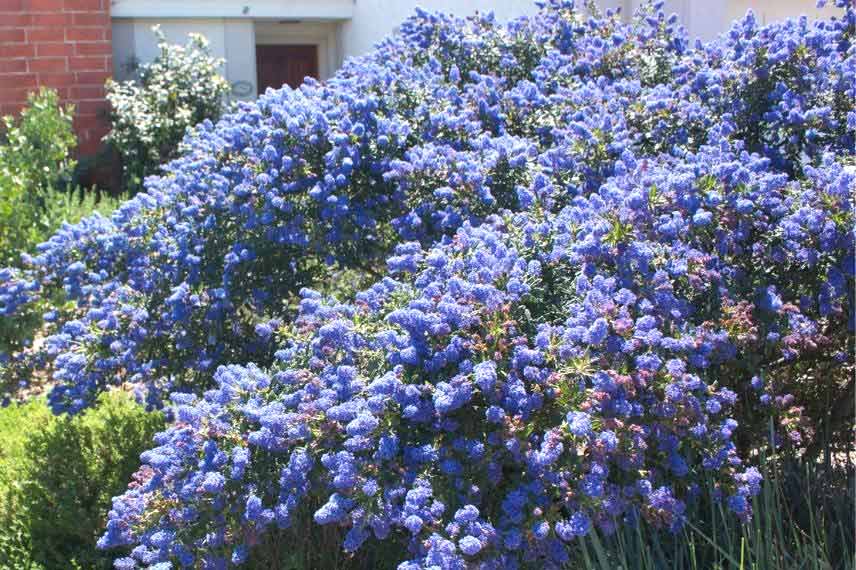
Ceanothus arboreus ‘Concha’
Discover other Ceanothus
View all →Available in 1 sizes
Available in 0 sizes
Available in 1 sizes
Available in 3 sizes
Available in 3 sizes
Available in 0 sizes
Available in 1 sizes
Available in 1 sizes
Available in 2 sizes
Available in 1 sizes
Ceanothus impressus 'Puget Blue': an early Ceanothus
If you are looking for an excellent variety known for its early flowering, look no further: the Ceanothus impressus‘Puget Blue’, with its stunning bright blue flowers, begins to bloom as early as the end of March. It literally becomes covered in very blue flowers, emerging from pink buds. Fast-growing, it develops a somewhat irregular bushy silhouette, reaching 2m in height and 1.5m in width at maturity. Its evergreen foliage, with a glossy green finish, makes it attractive and provides a solid base in your flower beds all year round.
A rather old horticultural hybrid, derived from the Californian botanical species Ceanothus impressus, this magnificent Ceanothus does not shy away from its origins as a chaparral plant (scrub vegetation of California and Mexico formed by bushes and shrubs in a Mediterranean climate) with exemplary frugality: not fearing either the sun or summer drought, it thrives in well-drained, poor soil. Valued for its cold resistance (down to -10°/-12°C) and ease of cultivation, Ceanothus impressus ‘Puget Blue’ will delight gardeners, even beginners.
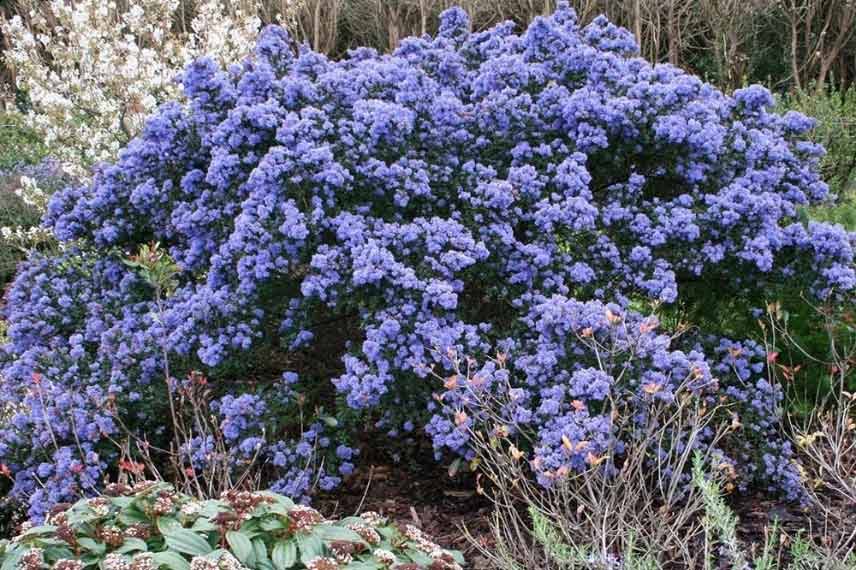
Ceanothus impressus ‘Puget Blue’
Ceanothus thyrsiflorus 'Tuxedo': a stunning purple foliage
Unique for its dark purple, glossy evergreen foliage, the Ceanothus thyrsiflorus ‘Tuxedo’ stands out from other Ceanothus. In May, it is covered in sky-blue flowers, beautifully contrasting against its almost black foliage. Rather tender (hardy down to -10°C), this spreading bush will reach a height of 1m and a spread of 1.5m, making it easy to find a place for it within shrub borders or even near a terrace, in well-drained soil and full sun. Like other Ceanothus, this recent variety should be planted in ordinary, well-drained soil that is rather dry in summer. Like other California Lilacs, this recent variety should be planted in ordinary, well-drained soil that is rather dry in summer.
Well-suited to coastal breezes, the Ceanothus thyrsiflorus ‘Tuxedo’ will be perfect in a seaside garden in a mild climate or in a sheltered position, trained against a south-facing wall, alongside Mediterranean shrubs or those suited to the Atlantic coast. Its delicately scented inflorescences continue for many weeks, from May to July, attracting countless pollinating insects.
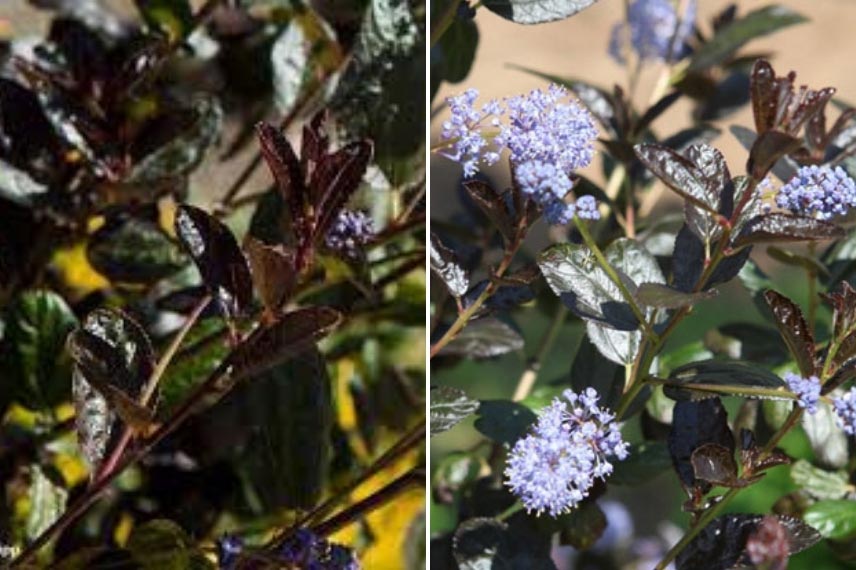
Ceanothus thyrsiflorus ‘Tuxedo’
Ceanothus x Burkwoodii: summer!
Rare among Ceanothus, the flowering of Ceanothus x ‘Burkwoodii’ will delight gardeners throughout the summer from June to the end of September. With a very bright light blue that is barely violet, it appears in the form of 5cm panicles at the tips of the branches, covering the entire plant. In addition to its summer flowering, which is quite unusual for a ceanothus, it has a dense bushy habit, wider than tall (height of 1.50m with a spread of 2m) that allows it to elegantly dress a corner of a border, a terrace edge, or to be supported against a wall. In any case, its flowering will be wonderful, and its evergreen foliage will enhance it all year round.
Its low cold resistance (-7°C) makes it more suitable for Mediterranean departments or the Atlantic coast, where it will thrive in a warm and sunny situation, in dry, well-drained, and low-calcium soil.
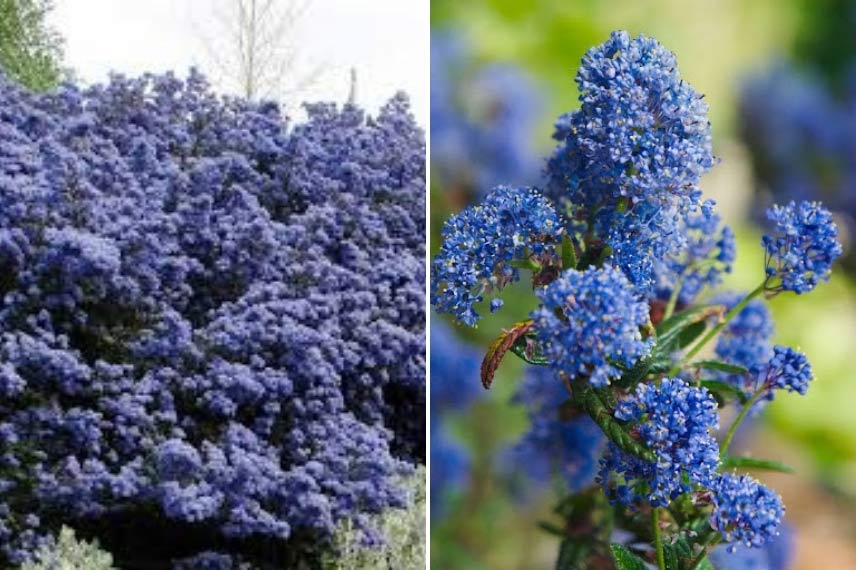
Ceanothus x ‘Burkwoodii’
Ceanothus impressus 'Cool Blue': the softness of variegated foliage
A cloud of softness for the Ceanothus impressus ‘Cool Blue’: this very recent cultivar features beautiful light evergreen foliage, broadly variegated with cream, on which tender blue inflorescences emerge. The overall effect creates a sense of soft, luminous colours, perfect for brightening up dark corners of the garden or slightly dull flower beds.
This ceanothus is one of the hardiest, tolerating negative temperatures down to -15°C. It forms a lovely bush 2m high and 1.5m wide: these dimensions make it very easy to integrate even into a small space, allowing it to be placed in a pot or a large container. Ideally, position it in full sun, in ordinary soil: it is not afraid of summer drought.
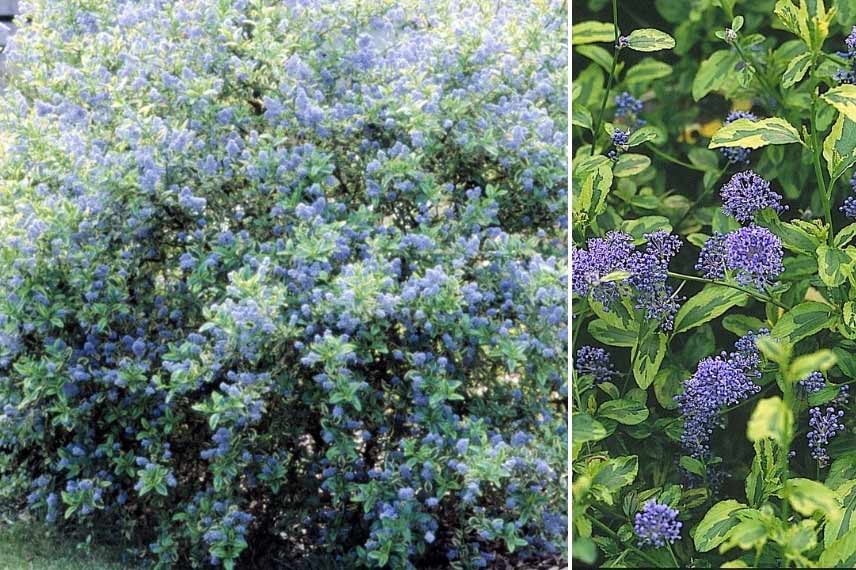
Ceanothus impressus ‘Cool Blue’
Ceanothus thyrsiflorus 'Blue Sapphire': an amazing groundcover
A deep and vibrant blue for this Ceanothus thyrsiflorus ‘Blue Sapphire’! Imagine a bush with evergreen foliage, a beautiful rich green, suddenly turning violet-blue for long months, from April to July… this is what this variety of Ceanothus with a low, creeping habit offers, which will quickly spread to a width of 1.5m and a height of 1m. Plant it at the edge of a terrace, to dress the front of a flowerbed, or to cover a slope. Its sapphire blue colour, rare among bushes, in panicles of 5 to 8cm, will surely catch the eye.
This ceanothus establishes easily in seaside and urban gardens thanks to its tolerance to sea spray and pollution. Preferring a dry, poor, and lime-free soil as well as a warm, sunny position, it should be reserved for regions with a mild climate due to its relative hardiness (down to -10°C). Once established in these favourable conditions, it will grow almost without requiring maintenance.
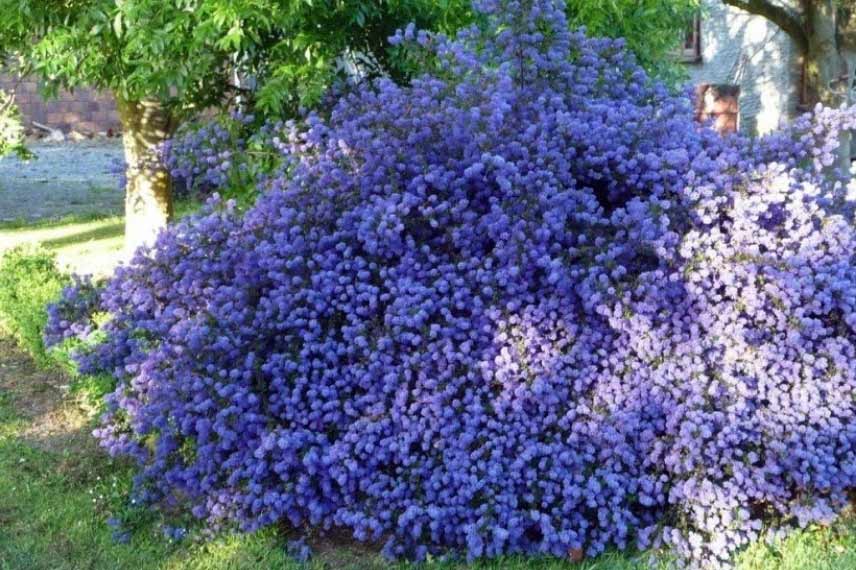
Ceanothus thyrsiflorus ‘Blue Sapphire’
- Subscribe!
- Contents
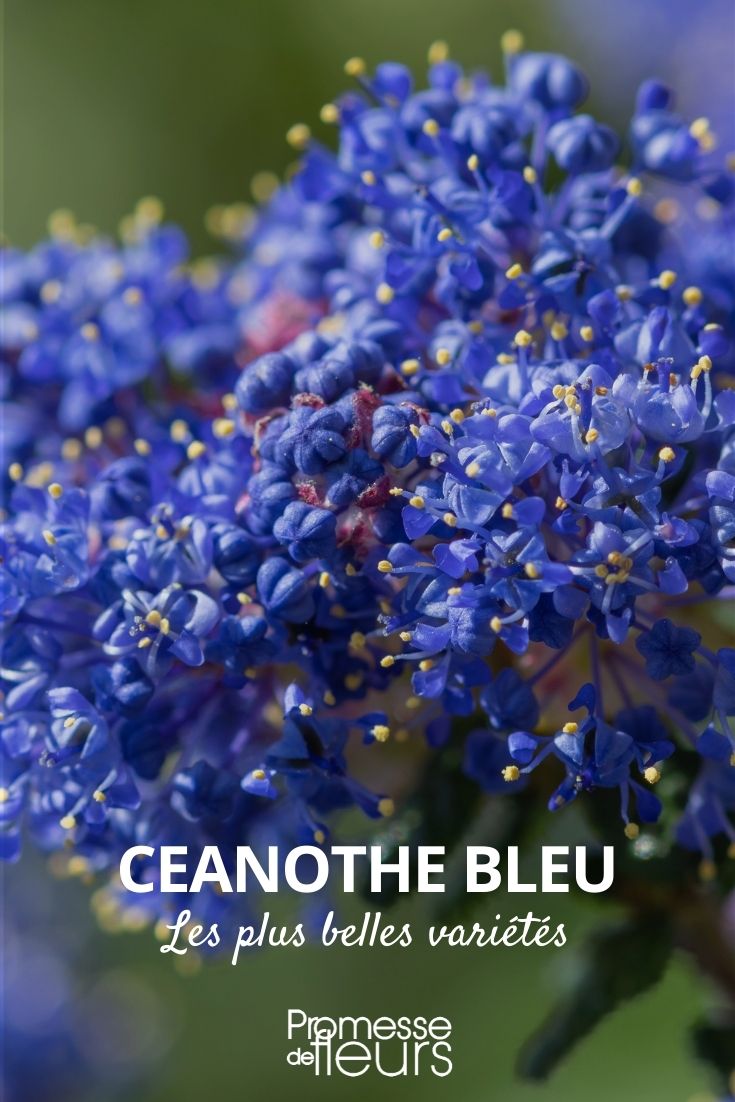































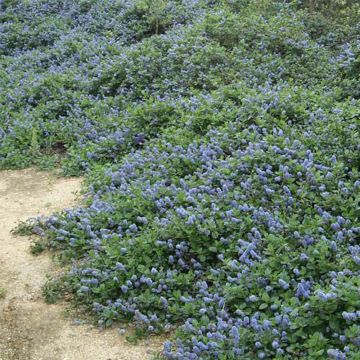


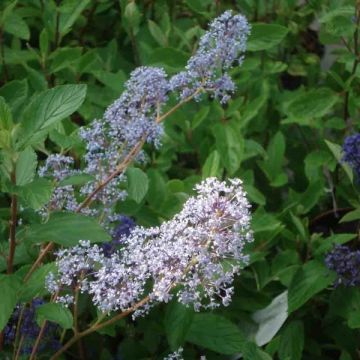

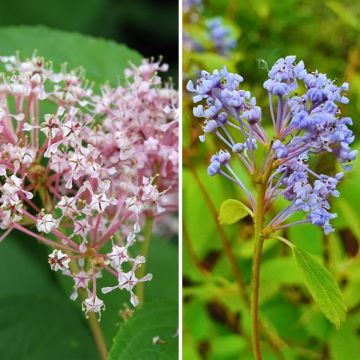
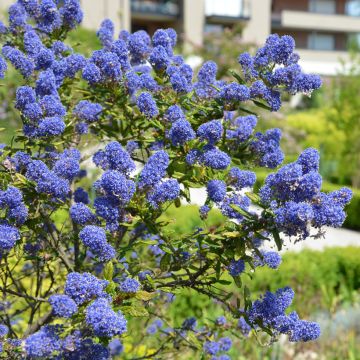
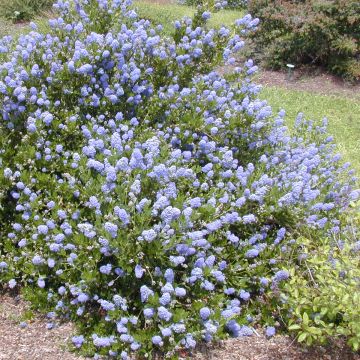
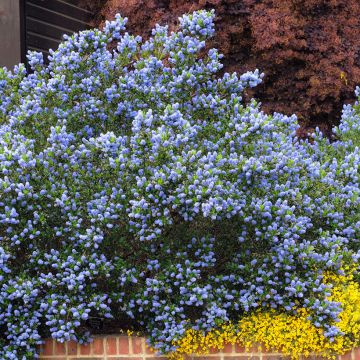

Comments